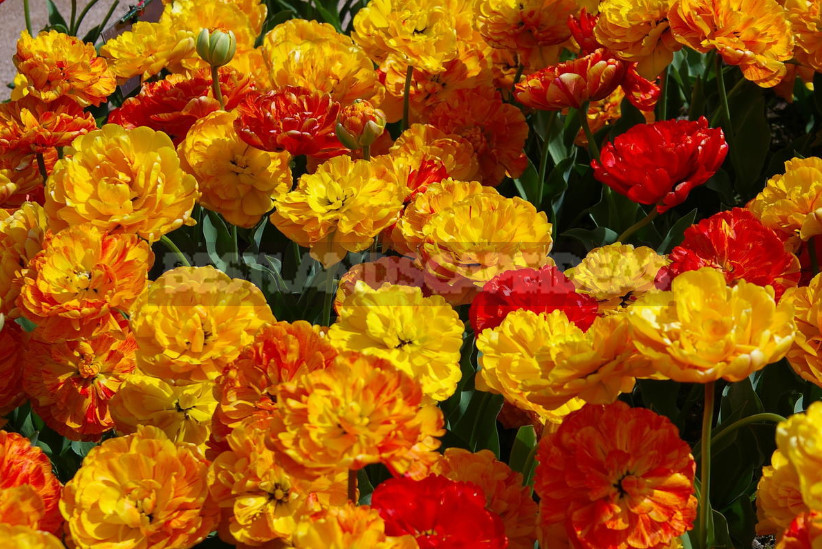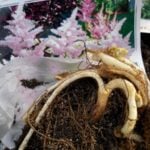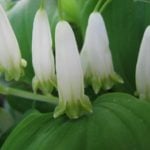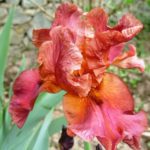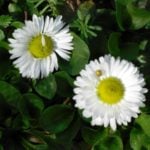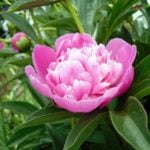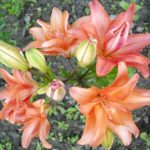We continue the interesting and useful topic of plant doubles. Came the turn of flower cultures.
The similarity of some plants gives us a kind of” trump card”: we can use them to replace those species that are problematic to grow in our region, or if we could not get a plant, or with a sudden loss of flowers for various reasons.

Such counterparts are able to extend the decorative period of the flower garden. Sometimes replacement of plants is so successful that the result becomes a highlight of giving, causing delight and surprise of your neighbors, friends.
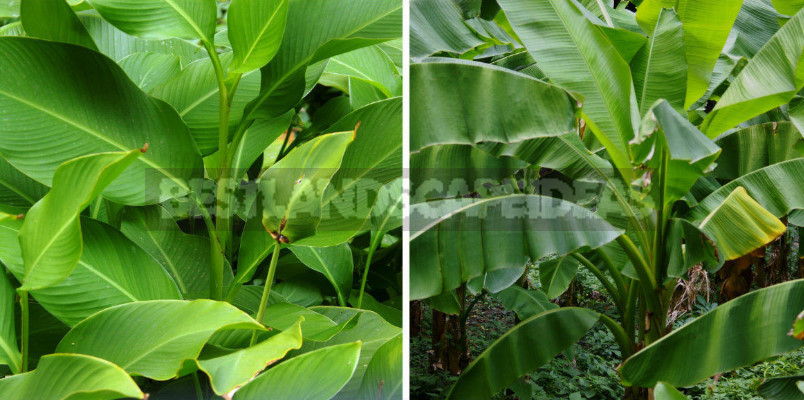
Flowers-analogues will help you to make a bouquet composition more perfect.
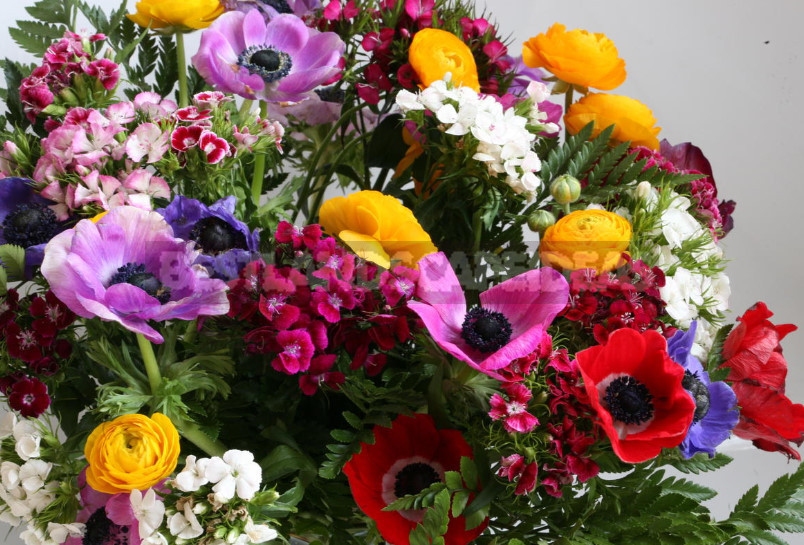
Similar to each other flower perennials were many. Let us make duets of them together.
Galanthus plicatus – Leucojum vernum
Great pair of snowdrops. Both plants are so good that when choosing a favorite there are difficulties, but often comes to the aid of his Majesty the case: I have in the country is growing a real Galanthus plicatus, and this kind I did not plant or sow.
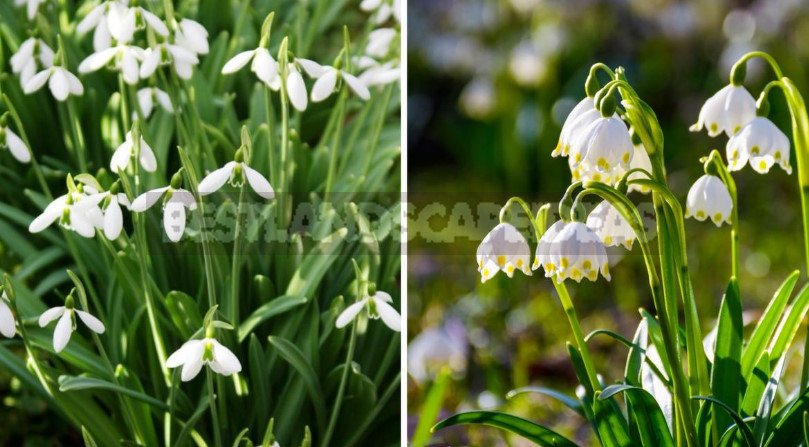
Let me remind you that Galanthus plicatus like places with light and medium shading, quite fertile, not wet soil. If you have a waterlogged area, it is better to opt for Leucojum vernum.
Tulipa – Paeonia
If on a long rabatke to set the rhythm of this pair of such different flower cultures, it is possible not to notice how to replace tulips peonies will blossom.

And only the yellowing leaves of the bulbs will make it clear that the star hour of the favorites of may has passed, and they were replaced by pompous fragrant Pets of June – peonies. The advantage of joint landings of this Duo is undeniable: carved peonies pour cover tulips, which after flowering quickly lose their decorative effect.
Iris – Xiphium
When I first saw xiphium from afar, it took them for irises.
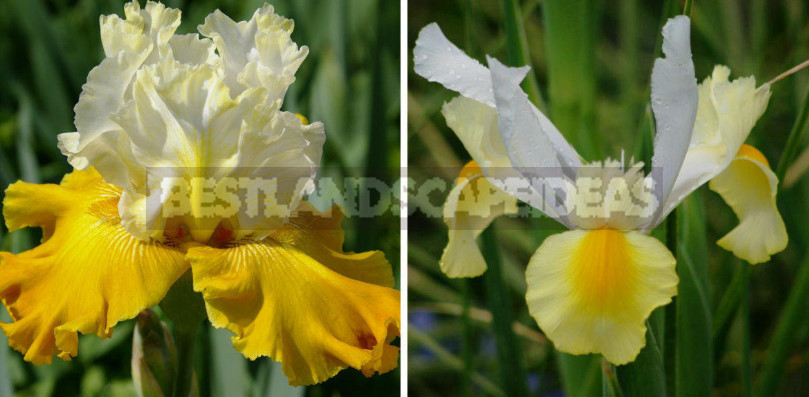
With a closer acquaintance with Xiphium can be seen that, despite the relationship with varietal bearded irises, these are different plants. Where the differences begin with the underground part: irises – rhizome, and xiphium – onion.
Vinca minor – Catharanthus roseus
This is a related couple from the family Apocynaceae. Only Vinca minor will bloom earlier.
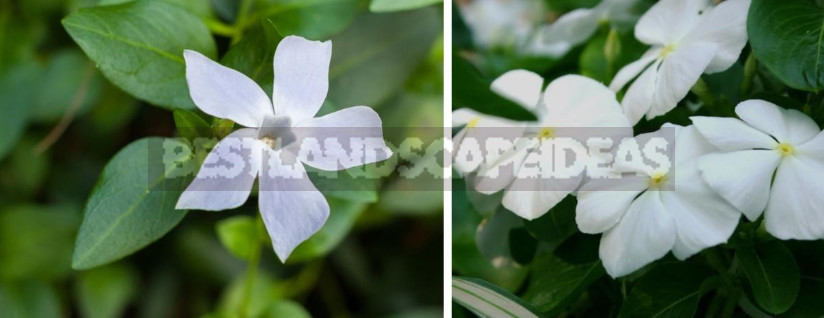
Recently, Catharanthus pleases with the wealth of dwarf varieties (and a wide variety of colors) and the availability of seedlings. Unlike Vinca minor, it is static, does not spread in all directions, covering the flower garden with a dense evergreen blanket.
Omphalodes – Myosotis
Spring made a couple of beautiful blue flowers from the family of Boraginaceae.
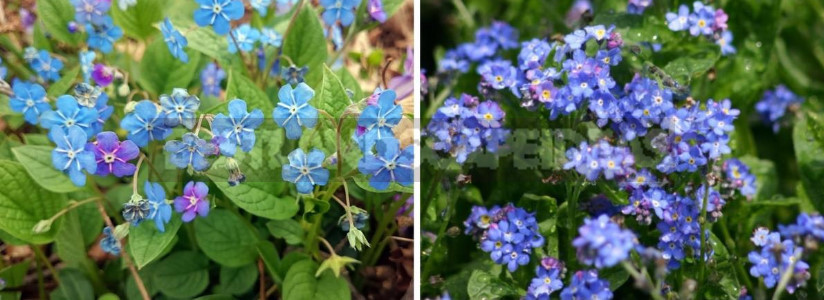
To distinguish perennial from perennial Myosotis, Omphalodes will help in on a little secret – its heart-shaped leaves. Omphalodes-ground cover plant (grows due to young rooting rosettes of leaves). To make confusion in the situation can be similar to Omphalodes Brunnera. To distinguish it from Myosotis is simple: Brunnera cent flower white, and Myosotis — yellow.
Canna – Musa basjoo
The similarity of Canna and Musa basjoo is visible to the naked eye, especially if they grow nearby.
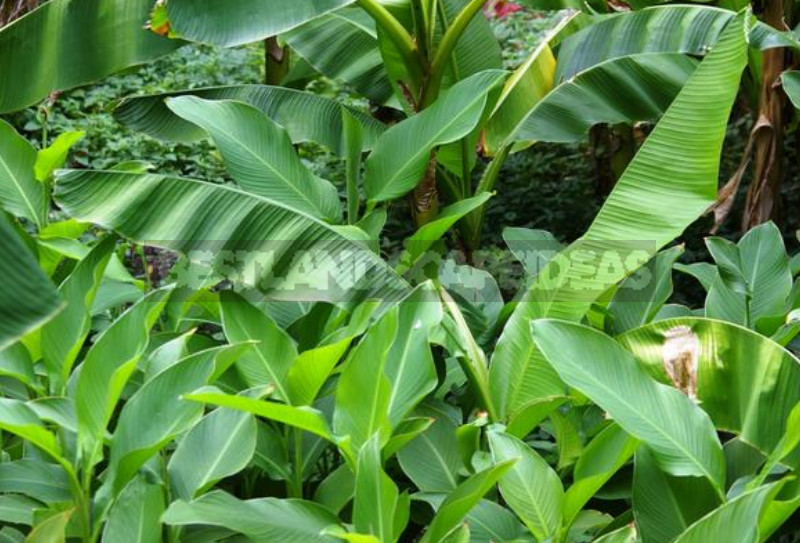
Gardeners, too, have noticed and have used amazing similarity of these plants.

And only in the flowering period can you see the difference.
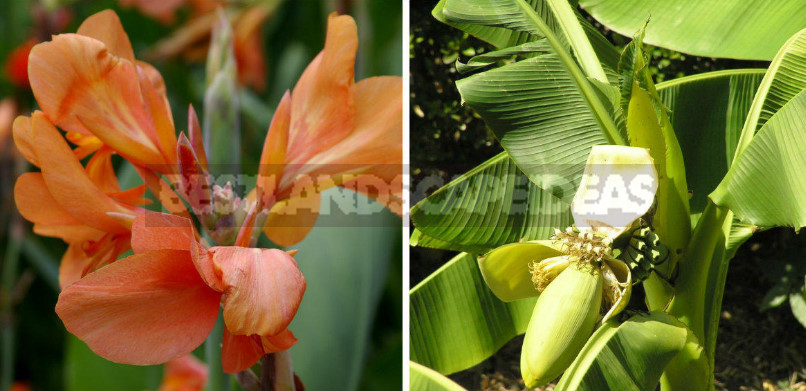
Undoubtedly, both of these plants – chic tapeworms, which look good on their own. In summer (with regular watering and fertilizing), some varieties of Canna can reach the size of Musa basjoo – more than 2.5 m in height. The richness of varieties with purple, yellow-mottled leaves will help to create the desired “tropical effect”. For earlier flowering rhizomes Canna awaken in advance, in February, planting them in a loose fertile substrate.
Crocus x hybridus – Colchicum speciosum
The classical similarity of these bulbous plants often baffles us. And if you are confused, then look at the background of what appeared these wonderful flowers. If the background of young green spring grass, it Crocus, if among the fallen yellow leaves, the Colchicum.
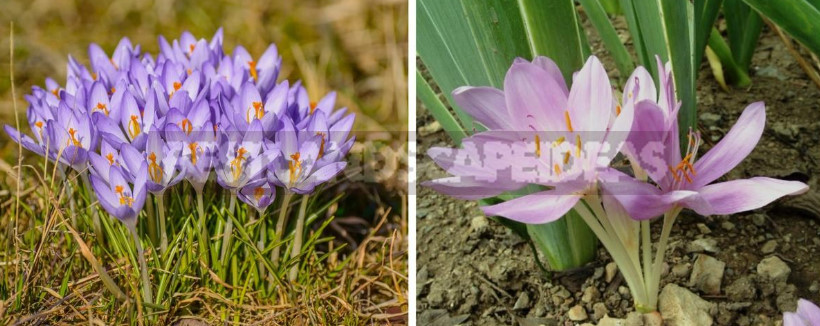
Crocus opens the March ball of spring primroses at the dachas. Its funnel-shaped flowers of white, yellow, purple colors appear from the ground quickly, as if by magic. Spring particularly not abandon its beauty, vitality, passion.
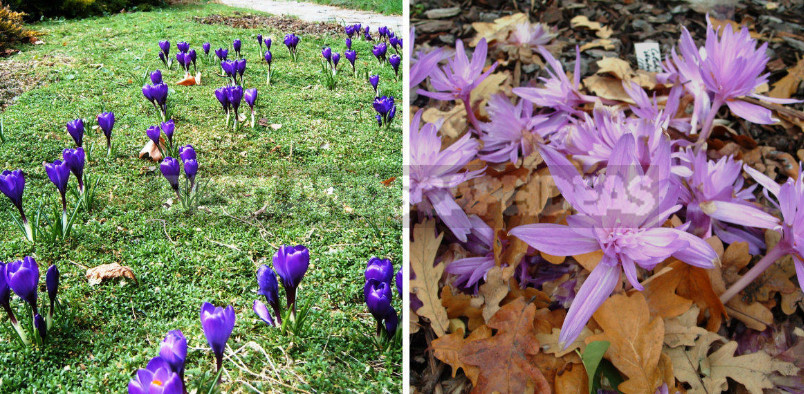
And when the summer colors of flowers in the country fade away, then from the ground on the translucent pale legs suddenly appear fragile pale pink flowers Colchicum autumnale or large lilac-pink, with a white center flowers C. speciosum. Colchicum is very similar to Crocus, so it seems that spring comes with them in the autumn garden at an inopportune hour.
Colchicum is better placed in places protected from the wind. In one place they grow up to 5 years. The distance between plants 6-10 cm, depth of planting corms 5-8 cm Soil prefer light, permeable, calcareous, fertile. In areas with cold winters require shelter.
Coreopsis grandiflora – Cosmos sulphureus
When I first saw a small compact Cosmos sulfureus, I took it for Coreopsis grandiflora. The incredible similarity of the perennial with the annual allowed me to put them in a pair.
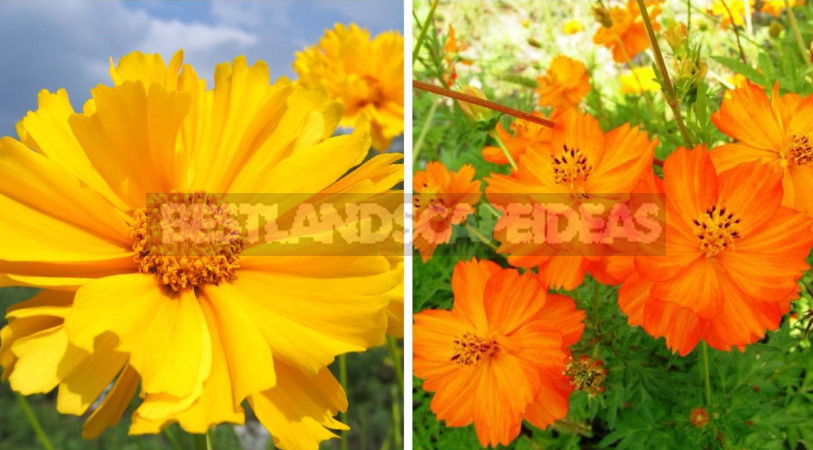
Both have the same requirements for everything, so they are interchangeable in flower beds. Give them a Sunny location (both drought tolerant), fertile soil (grow and bloom well in our carbonate), responsive to irrigation and fertilization.
Aubrieta deltoidea – Saponaria ocymoides
Frankly, I still confuse these plants in the photos, so I’m not lazy to count the number of petals in the flowers: if 4 – Aubrieta deltoidea, if 5 – Saponaria ocymoides.
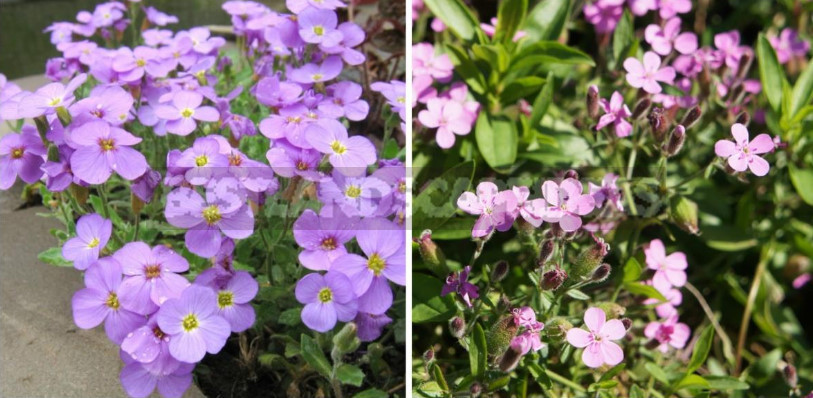
In nature, they are difficult to confuse, as it is time to bloom at different times: Aubrieta deltoidea pleases us in early spring, and Saponaria ocymoides – from June to August. If both plant among the rocks in rockeries, you will only have the effect of continuous flowering “one plant” from early spring to late summer.
And what pairs of similar perennials did you notice during your summer practice?
